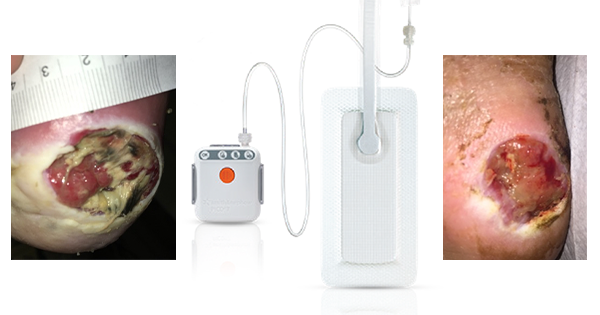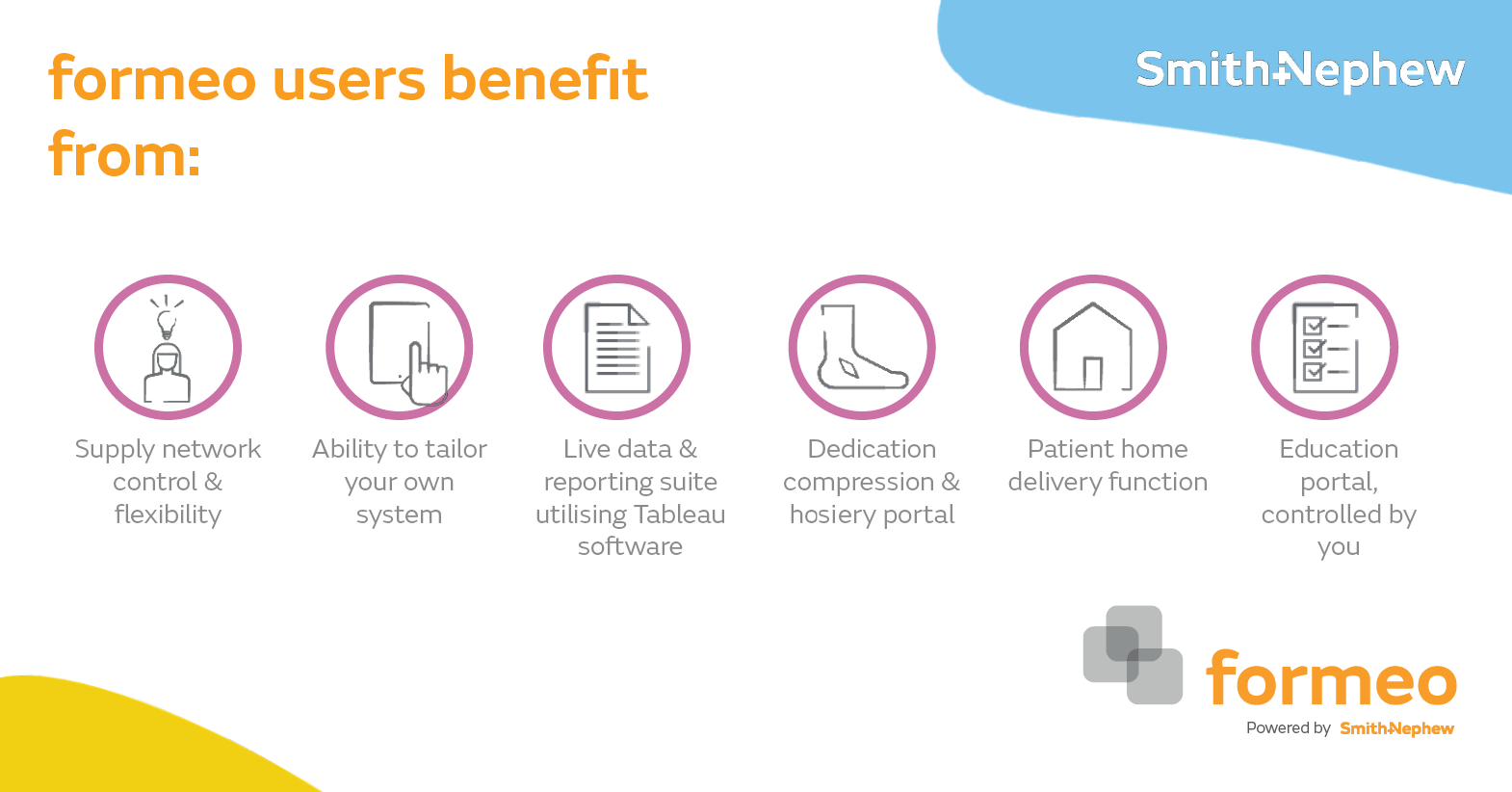It is estimated that 2–2.5% of people with type 2 diabetes in the UK have active foot disease, with a greater risk of amputation, especially if the ulcer remains active for a prolonged period. In 2014–2015, diabetes-related foot care accounted for nearly 1% of the total NHS budget, or approximately £1 billion (Kerr et al, 2019). The social care cost is estimated at £13.9 billion (Short-life Working Group, 2019). People with diabetes fear lower limb amputation more than death (Wukich et al, 2018). Unless there is significant intervention, the personal, social and fiscal costs of diabetes-related ulceration and amputations will only worsen. This has already been observed by Guest et al (2020), as patient management costs have increased by 48% in real terms when compared to data from 2012/13–2017/18.
Complications and urgency in diabetic foot ulcers
A diabetic foot ulcer is complicated by arterial disease (ischaemia), infection and/or mechanical pressure damage to an insensate foot (Sharpe, 2020). Amputations occur because the condition is aggressive, time-dependent and driven by infection and/or ischaemia from ulceration to gangrene. However, the series of events that leads from ulceration to gangrene is frequently overlooked because the urgency of intervention is often not fully understood or given the priority it requires by the patient, caregiver and healthcare professional.
The National Institute for Health and Care Excellence (NICE; 2019) recommendations stipulate that patients with diabetic foot ulcers should be referred to the multidisciplinary team foot care service (MDFS) within one working day of presentation to reduce the risk of amputation and cost of treatment. The National Diabetic Footcare Audit observed that those referred to specialist services within 14 days of first presentation had more favourable wound outcomes, including significantly fewer severe ulcers, and were more likely to have healed within 12 weeks (Jeffcoate et al, 2020). Despite these recommendations, Guest et al (2018) observed that in practice, only 22% of patients with diabetic foot ulcers are actually referred to specialist outpatient diabetic foot clinics and only 5% are referred to podiatry services.
Time is tissue
The principle ‘time is tissue’ emphasises that delay in diagnosis and treatment can result in a real risk of lower limb amputation (Vas et al, 2018). To ensure timely treatment for individuals with diabetes and enable clinicians to identify early signs of ulceration, ischemia and infection, a multidisciplinary approach is necessary. This approach facilitates prompt referral to specialist care, ensuring initiation of treatment as soon as possible (Wounds UK, 2021) and maximising opportunities for providing care, ultimately improving healing outcomes.
In cases where individuals with diabetes present limb-threatening or life-threatening foot problems, such as ulceration with limb ischaemia, fever, signs of sepsis, deep-seated soft tissue, bone infection or gangrene, immediate referral to acute services is crucial, with the MDFS being informed.
The provision of the MDFS for managing diabetic foot ulcers is advocated and recommended by both national and international groups (NICE, 2019; Schaper et al, 2019). According to results from the National Diabetes Footcare Audit questionnaire in 2021, out of 96 healthcare providers across England and Wales, 91% of them (83 healthcare providers) had access to the MDFS (Healthcare Quality Improvement Partnership, 2022).
MDFS vary in terms of the professional groups represented and may constitute some or most of the disciplines listed in Box 1 (NICE, 2019). The exact number of areas containing all professionals is unknown, but it is believed to be low.
Organised MDFS are well placed to manage complex wounds, perform vascular assessments, refer patients to acute care if there is clinical concern for deep-seated soft tissue or bone infection and provide standard care such as offloading devices (NICE, 2019).
Active treatment for non-healing wounds
In cases where wounds are not complicated by ischemia, infection or mechanical pressure, but still do not heal, it is important to empower staff with the necessary tools to escalate care toward more active treatments to achieve better outcomes for individuals. Active treatment assumes that the initial diagnosis is accurate and that standard care, including cleansing and debridement performed by a healthcare professional with the relevant training and skills, has been thoroughly carried out. See Box 2 for examples of active treatments.
NICE (2019) recommendation for the treatment of diabetic foot ulcers, is to consider the use of negative pressure wound therapy after surgical debridement, on the advice of the MDFS. In non-healing wounds, the use of single-use negative pressure wound therapy (sNPWT) can potentially help improve wound healing rates and consequently reduce nursing resources and costs associated with them (Hampton et al, 2022).
The reported mechanism of action for sNPWT involves improving blood flow to the wound, reducing local tissue swelling and effectively removing fluid and bacteria from the wound bed. Therefore, sNPWT actively treats the wound rather than solely managing its symptoms (Schwartz et al, 2015).
PICO sNPWT involves applying controlled sub-atmospheric pressure to a wound through a sealed dressing connected to a vacuum pump. PICO sNPWT is a canister-free, single-use system that offers portable negative pressure wound therapy and features a unique air lock layer, ensuring consistent negative pressure is applied across the entire dressing surface, providing therapy not only to the wound but also to the surrounding area (Wounds UK, 2022). It is lightweight, battery-operated and offers a discreet alternative to traditional NPWT (tNPWT; Hurd et al, 2014).
PICO sNPWT Non-healing wound clinical practice pathway
Diabetic foot ulcers are not solely managed by podiatry; therefore, a system-wide approach involving the MDFS is required to provide effective ulcer care. Figure 1 is a pathway adapted from Dowsett et al (2017) that was developed for the use of PICO sNPWT. This pathway offers clear guidance to help clinicians who are caring for patients with diabetic foot ulcers make decisions regarding early intervention with active treatments, such as sNPWT for patients with non-healing wounds in the community.
Initial wound assessment specific considerations:
- Has the wound received optimised treatment before commencing sNPWT e.g. gold standard treatment or specialist referral?
- Has the wound reduced in area by <20% per week over the previous 2 weeks or <40% in 4 weeks?
- Is sNPWT suitable for the wound?
- If there are signs of clinical infection, use in combination with ACTICOAT™ FLEX 3 Antimicrobial Barrier Dressing* using the two-week challenge principles (Dowsett et al, 2017).
* Note: ACTICOAT FLEX 3 has a wear time of 3 days
According to the pathway, wounds should be assessed on a weekly basis. The assessment should include a review of wound measurements and any changes in exudate, pain and granulation tissue to determine wound healing progress. In case of any standard contraindications for negative pressure, PICO sNPWT must be discontinued.
At weeks 2, 3 and 4, a ‘decision point’ for whether or not to continue PICO sNPWT is prompted. This is based on the percentage of wound area reduction:
- If the wound is not responding to treatment and has not reduced by 5% at week 2 (compared with week 0), <7.5% at week 3 or <10% at week 4, the use of PICO sNPWT must be discontinued, and further investigation or referral to a specialist service is necessary
- If the wound area has reduced between 10% and 40%, clinical and economic judgement will determine whether PICO sNPWT should continue on a week-by-week basis
- For wounds that have reduced by more than 40%, PICO sNPWT can be discontinued. However, it can be re-instigated if required, for example, if wound healing rate slows or stalls. This decision is based on the individual clinician’s judgement.
- By week 12, a final wound assessment and discontinuation from evaluation is conducted based on the healing progress.
Real-world VALIDATION
The pathway is currently undergoing validation in real-world settings after adaptations were made. Hampton et al (2022) demonstrated that using the pathway can potentially result in a cost savings of approximately £651 per patient, a 52% healing rate within 12 weeks and a 50.9% reduction in the number of dressing changes, releasing 4,792 nursing hours (approximately 200 days or 28.5 weeks).
case study
The following case study demonstrates the use of the PICO sNPWT non-healing wound clinical practice pathway and sNPWT to successfully treat a patient with a non-healing diabetic foot ulcer.
Patient presentation
A 60-year-old male with a history of type 2 diabetes presented with a left posterior heel ulcer that had been present for 9 weeks (Figure 2).
The patient’s dressing regime consisted of a superabsorbent dressing with a primary silver dressing and dressing changes needed 3 times a week, along with the use of a removable walker boot to offload the diabetic foot ulcer.
From weeks 8 to 12, the patient’s dressing was changed twice weekly and the use of low-adherent dressing was applied. Exudate levels and wound size decreased weekly, and by week 12, the use of low adherent dressing was discontinued because the wound had healed and the skin was intact.
Practical guidance for using PICO sNPWT
The practicalities of implementing a new pathway can be challenging due to barriers related to staff competence, confidence and experience. To improve confidence in selecting the most appropriate product, adherence to the inclusion and exclusion criteria is necessary. Fear of incorrect application of the dressing, which may not occur with lower-cost dressings, can also be overcome by working with teams to demonstrate ease of application. Where necessary or desired, support through supervision may be useful. Ownership of the pathway by staff teams is crucial. Involving all members of the team in the development of a pathway locally fosters ownership and an understanding of the rationale behind using the pathway and in this case PICO sNPWT.
One critically important component of staff training is to ensure appropriate review and continuation or discontinuation of therapy. This can be achieved by monitoring outcomes and setting a predetermined treatment stop to avoid inappropriate overuse. Equally, or more important, early termination of treatment when positive outcomes are observed should also be prevented and treatment should be continued until wound healing occurs.
Evidence of cost savings from previous published studies (Dowsett et al, 2017; Hampton et al, 2022) can dispel the perception of an increase in dressing spending. Clinician time and time to healing can be significantly reduced compared to conventional dressing care. Measuring these outcomes locally can support discussions on the topic.
Conclusion
The implementation of the pathway has resulted in the patient receiving appropriate treatment at an earlier point than when conventional methods have been used. The pathway can be seamlessly integrated with existing pathways, such as MDFS pathways, providing staff with the necessary confidence, experience and competence for sustainable change. Measuring outcomes using defined criteria enables the organisation to collectively monitor the improvement in patient and fiscal outcomes, which can be compared against national datasets.
Healthcare costs are rapidly increasing due to clinician time and cost of wound care products, leading to significant life-altering outcomes for patients if problems escalate. As healthcare providers, we continually strive to improve outcomes while reducing expenses and doing more with less. The pathway is a step in the right direction towards achieving these goals.







